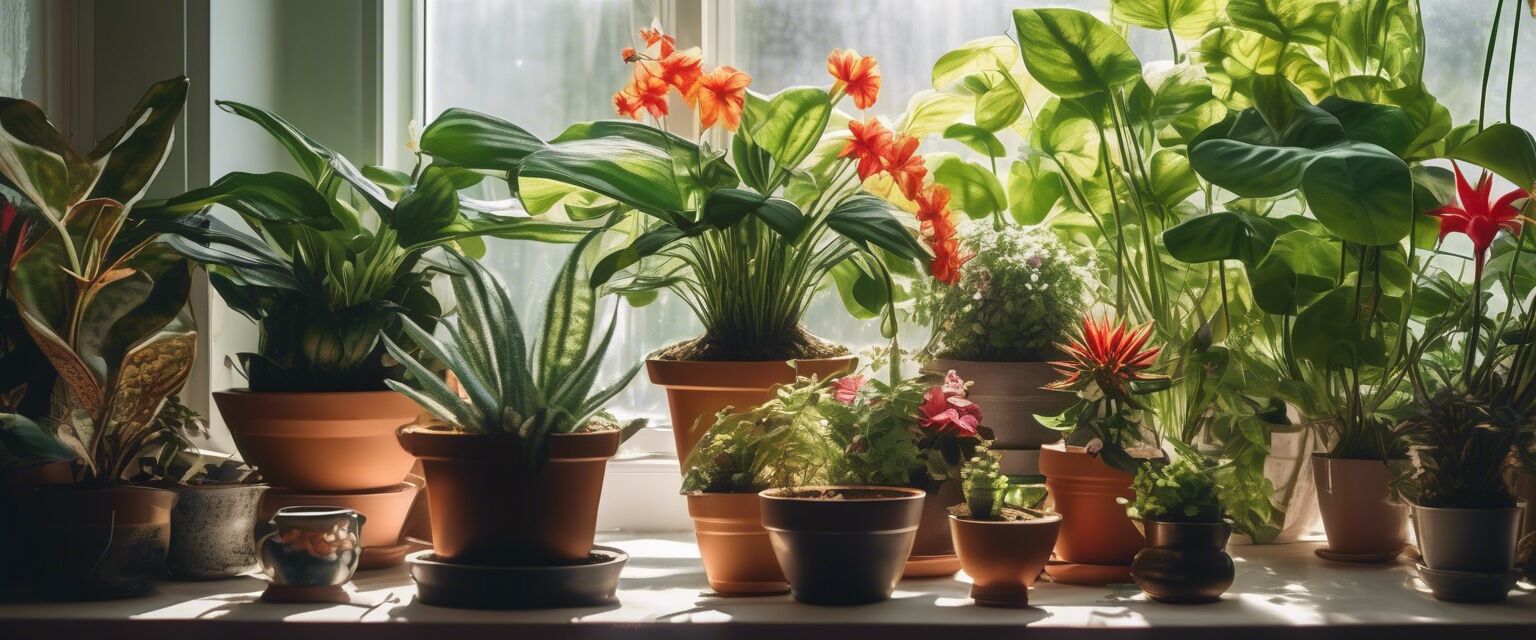
How to Encourage Blooming in Houseplants
Key Takeaways
- Understand the specific light and temperature requirements of your houseplants.
- Maintain a consistent watering schedule and consider using fertilizers.
- Pruning dead flowers and leaves can help direct the plant’s energy towards new blooms.
- Learn about specific species as some may have unique blooming needs.
- Observe your plant for signs of stress or disease which can impact blooming.
Encouraging blooming in houseplants can transform your living space into a vibrant paradise. Houseplants not only add color and beauty to your home, but they can also elevate mood and enhance aesthetics. In this article, we explore effective techniques to promote blooming in indoor plants, ensuring vibrant flowers throughout the growing season.
Understanding the Basics of Plant Blooming
Before delving into tips and techniques, it’s essential to grasp the basics of how houseplants bloom. Blooming is a plant's reproductive process, which can be influenced by several factors:
- Light: The amount and quality of light are crucial for flowering.
- Water: Adequate moisture is necessary to support blooming.
- Temperature: Many plants require specific temperatures to thrive.
- Fertilization: Nutrient supply plays a significant role in blooming.
Optimal Conditions for Blooming
Each plant species has unique care requirements. Here’s a guide to some common elements that can enhance blooming:
| Factor | Optimal Conditions |
|---|---|
| Light | Bright, indirect sunlight for most flowering plants; some may require direct sunlight. |
| Water | Regularly water but keep the soil moist without overwatering; let it dry slightly between watering. |
| Temperature | Most indoor plants thrive in temperatures between 65°F to 75°F (18°C to 24°C). |
| Humidity | Use a humidity tray or misting to maintain adequate moisture; especially important for tropical species. |
Fertilizing for Blooming Success
Fertilizing your houseplants can provide them with essential nutrients necessary for flowering. Here are some tips on fertilizing effectively:
- Use a balanced fertilizer with a higher phosphorus content (middle number on the N-P-K ratio) to encourage blooming.
- Fertilize during the growing season (spring and summer) when plants are actively growing.
- Follow the manufacturer’s guidelines to avoid over-fertilization, which can harm your plants.
Pruning and Deadheading
Regular upkeep of your plants can significantly boost their flowering capabilities. Consider the following:
- Pruning: Regularly remove dead or yellowing leaves to redirect energy to blooming.
- Deadheading: Remove spent flowers to encourage new growth and prolong blooming.
- This encourages bushier growth, which can lead to more blooms over time.
Understanding Your Plant Types
Different plants have diverse blooming habits and requirements. It's best to familiarize yourself with your specific plants. For practical care tips tailored to each type, check out our [Care Tips section](/blog/care-tips).
Some plants are naturally prolific bloomers, while others may bloom only under certain conditions. Monitor your indoor environment and adjust care as needed.
Common Issues Affecting Blooming
Pests, diseases, and environmental stressors can inhibit blooming. Common issues to watch for include:
- Pest infestations: Check for signs of insects that may be harmful to your plants.
- Over or underwatering: Both can severely impact blooming; maintaining the right balance is crucial.
- Temperature fluctuations: Protect your plants from drafts or sudden temperature changes.
Specific Techniques for Encouraging Blooming
Here are some specific techniques to maximize blooming in your houseplants:
- Provide adequate light exposure, adjusting placement if necessary.
- Maintain a consistent watering schedule, adapting to seasonal changes.
- Incorporate a specialized fertilizer during the blooming phase.
- Prune regularly and remove any harmful pests.
- Create an optimal indoor environment using humidity trays and proper temperature settings.
Conclusion
Encouraging blooming in houseplants requires understanding their unique needs and creating a nurturing environment. By following these tips and techniques, you can enjoy a flourishing garden of vibrant flowers indoors. Remember to consult our [blog for more care strategies](/blog/care-tips) tailored to different types of houseplants. Happy gardening!

